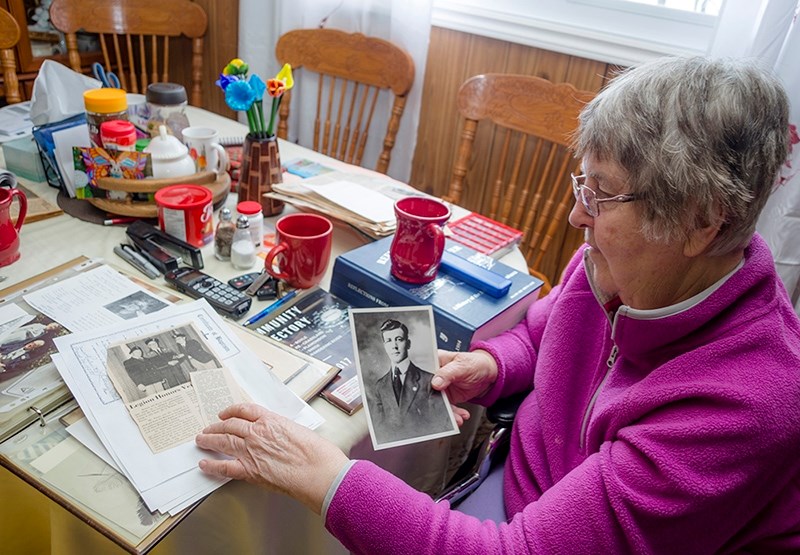“He was very humble… he didn’t think he’d done anything too much,” says 78-year-old Athabasca County resident Ardith Haub.
Haub sits at her kitchen table in her home 15 miles northwest of Athabasca. Surrounded by yellowing newspaper clippings, obituaries and family portraits, she recounts the life of her father, Walter Peters, a Vimy Veteran from the Athabasca area.
“He was just a kid, he was just a kid my father. His father let him, a lot of them lied about their age,” Haub continues. “My father lived more in them four years than most people live their entire life.”
Walters was five feet and 11 inches tall when he enlisted to fight in World War I on Dec. 15, 1915, only 15 years of age. At the time of the historic Vimy Ridge battle 100 years ago April 9-12, Peters was 17 years of age and a corporal.
Haub says her father was like many other veterans, in that he never talked very much about fighting in the First World War, and particularly Vimy Ridge.
“He said that he was one of the few that survived the battle. He walked out on bodies, I think between nine and 10 thousand people were killed,” she said. “That was a horrific war. My father wouldn’t talk about it very much, and I don’t think anybody did really.”
Haub’s father was one of them. According to a June 1978 newspaper clipping from Haub’s mother’s meticulous scrapbook, Peters was also the last surviving Vimy Veteran in the Athabasca area before his death April 17, 1983.
“He lived quite a long life dad did for being shot down,” Haub says.
Among the rare scraps of knowledge she was able to glean from her father over the years, she says her father was an extremely talented machine gunnist by trade.
“He had quite an interesting life in the military. He was a machine gunnist and he could take a machine gun apart and put it together in the dark in half a minute, that’s how well he was trained,” she says.
Peters was nearly left for dead in battle June 1918 after being buried alive by a shell, which left him recovering in Rouen, France for less than a month before rejoining his outfit.
“He was buried alive with a shell and his buddy seen him buried alive and they dug him out. He lived but he had shrapnel in his hip,” Haub says.
Peters was discharged June 6, 1919 and moved to the Alberta in the Vermillion area, where he farmed and began courting Izola DeFord.
The couple moved to Athabasca 1947 with their two daughters, where Peters continued farming and became foreman of the Athabasca River ferry until the Athabasca Bridge was built in 1952.
With emotion Haub turns from details on the War to her Dad’s character as a father, husband and friend.
“I would say he was an incredible human being,” she says. “My dad was the kindest, most generous man. You wouldn’t believe he was in the war,” she said.



